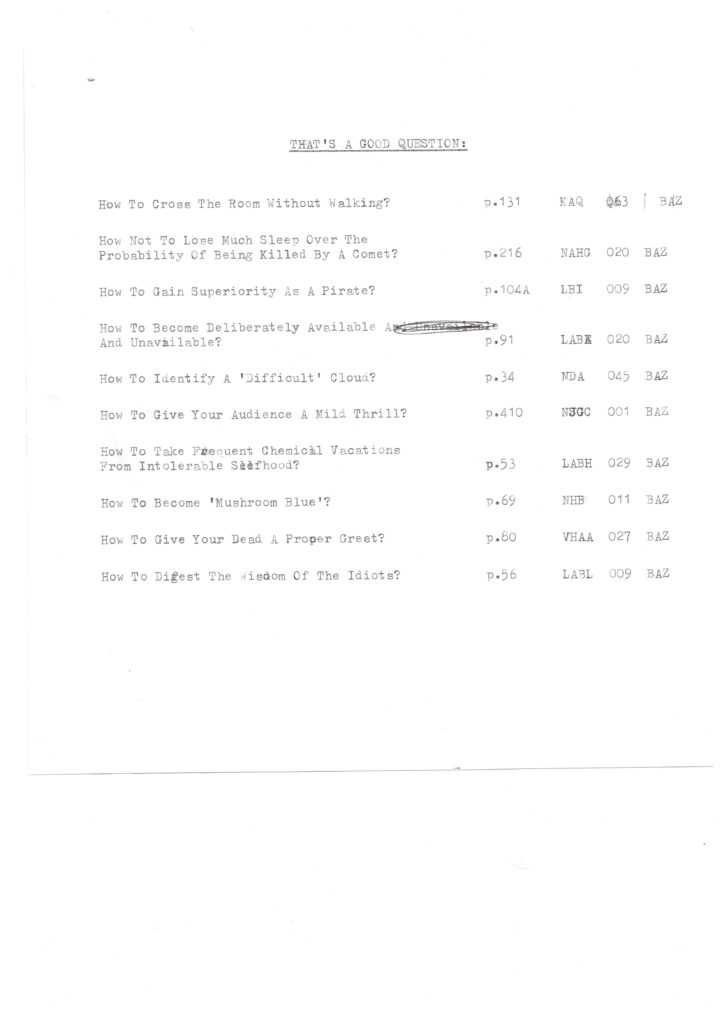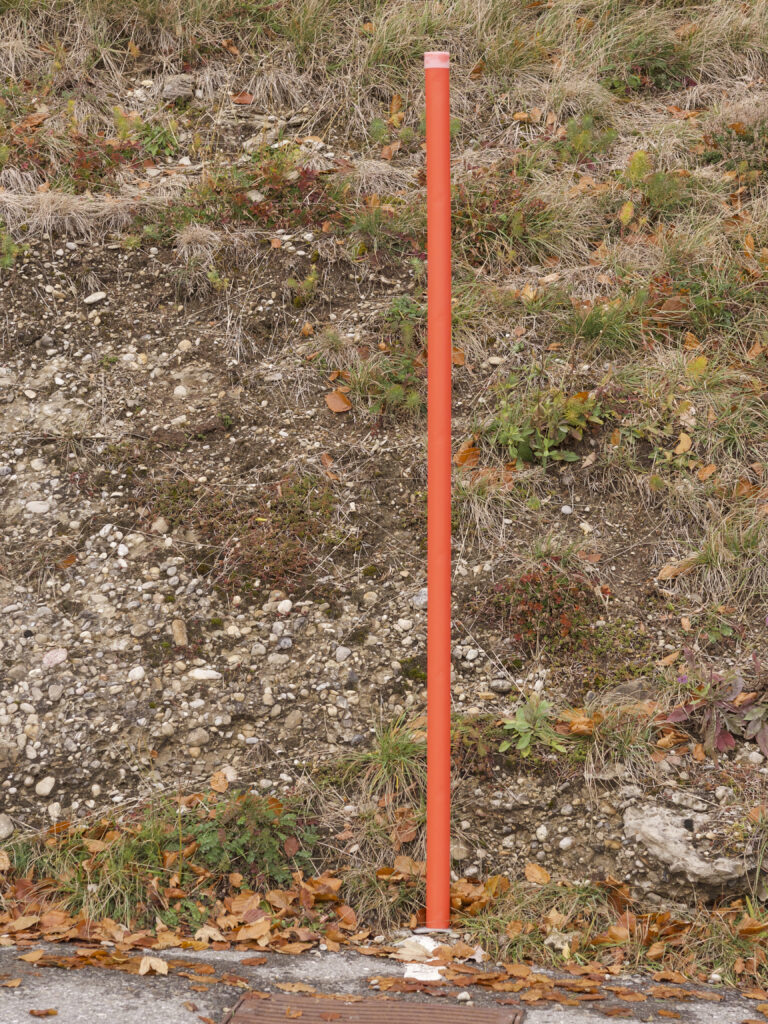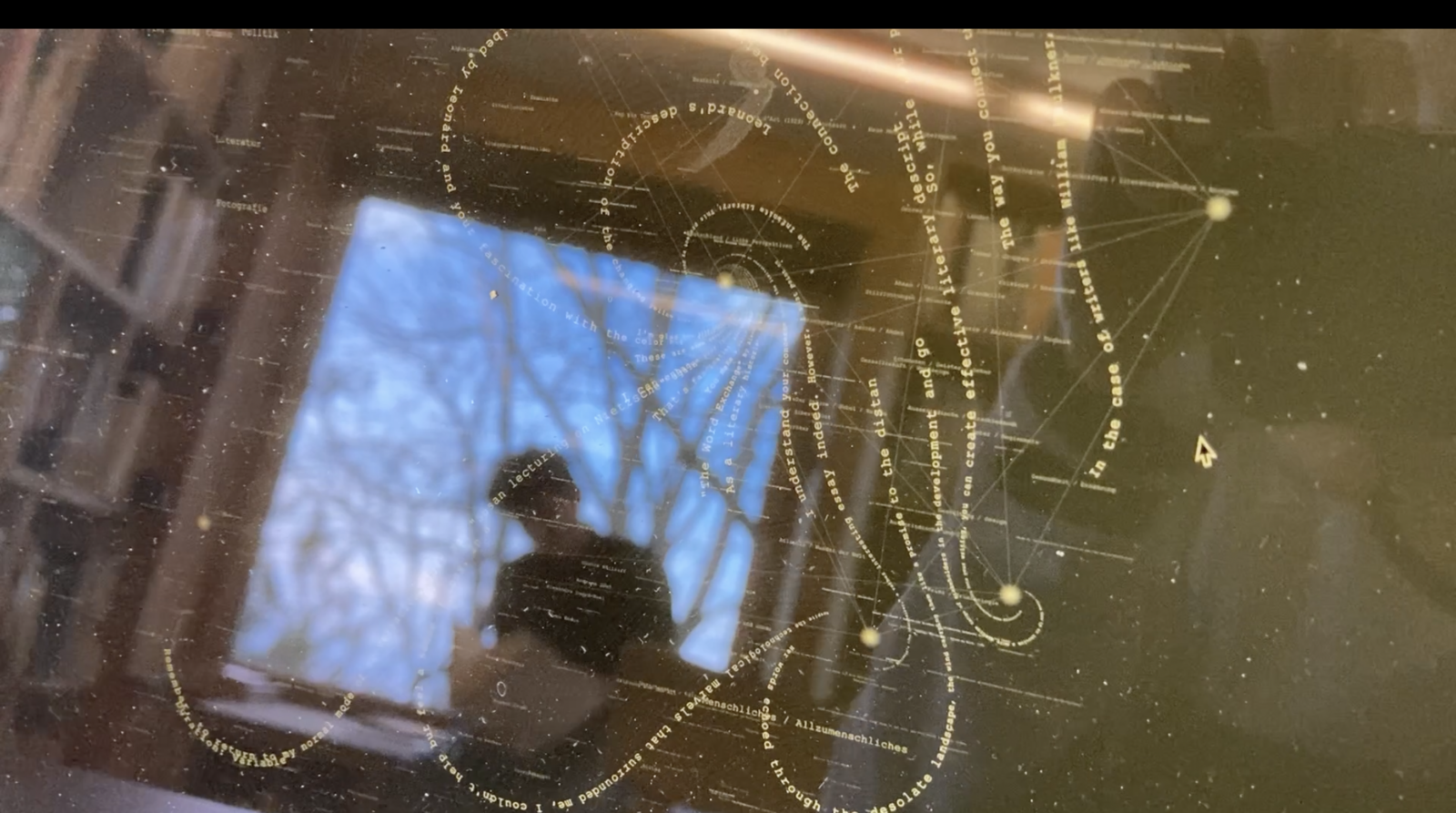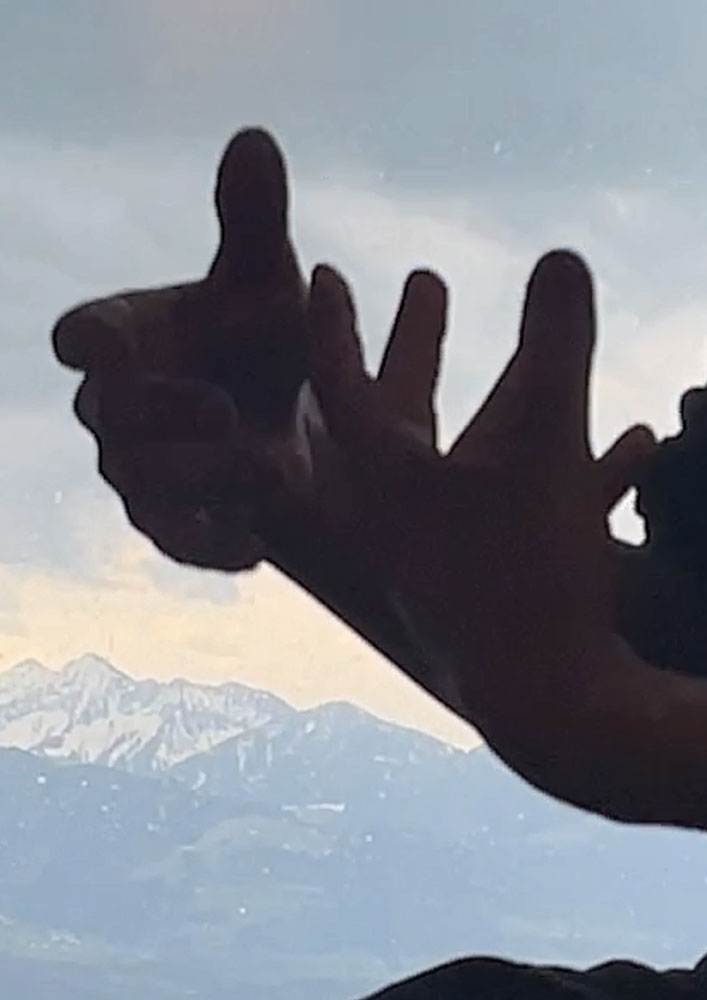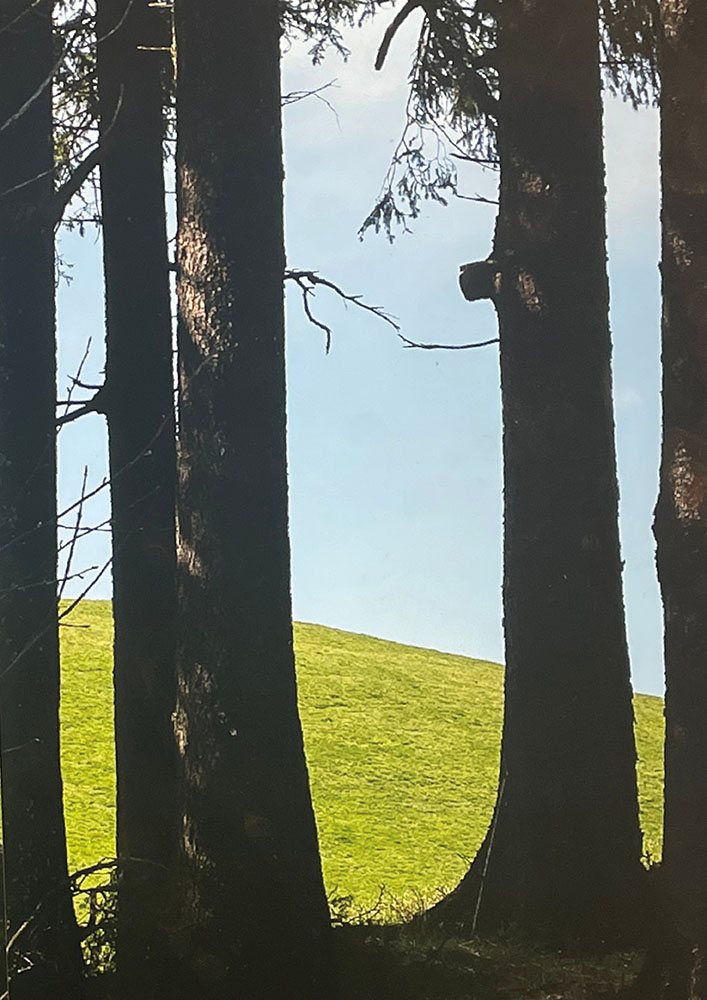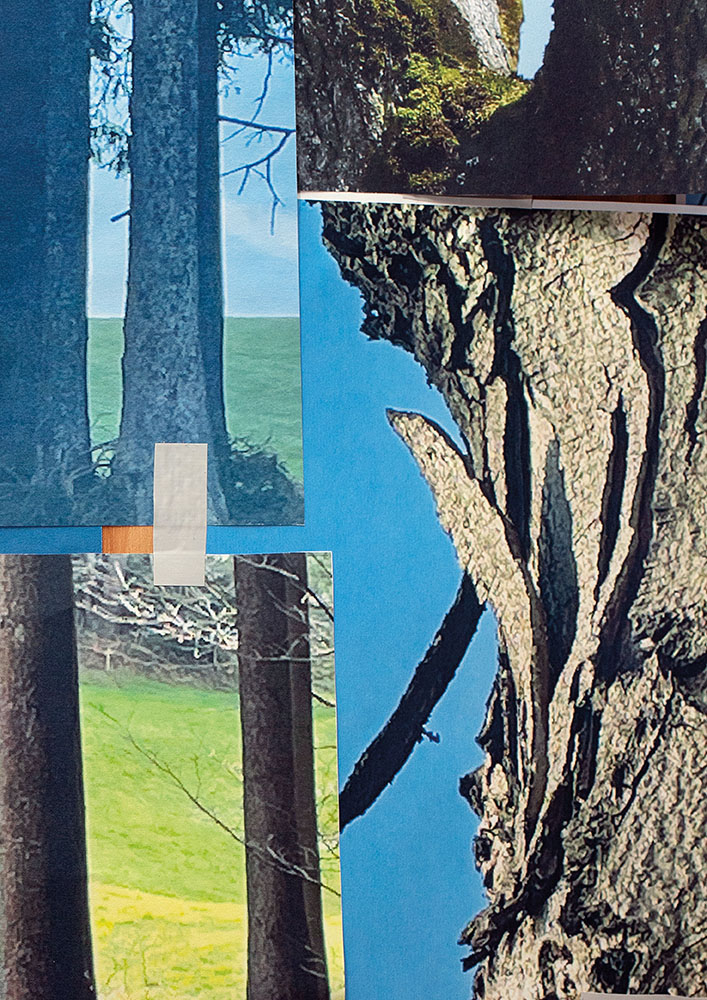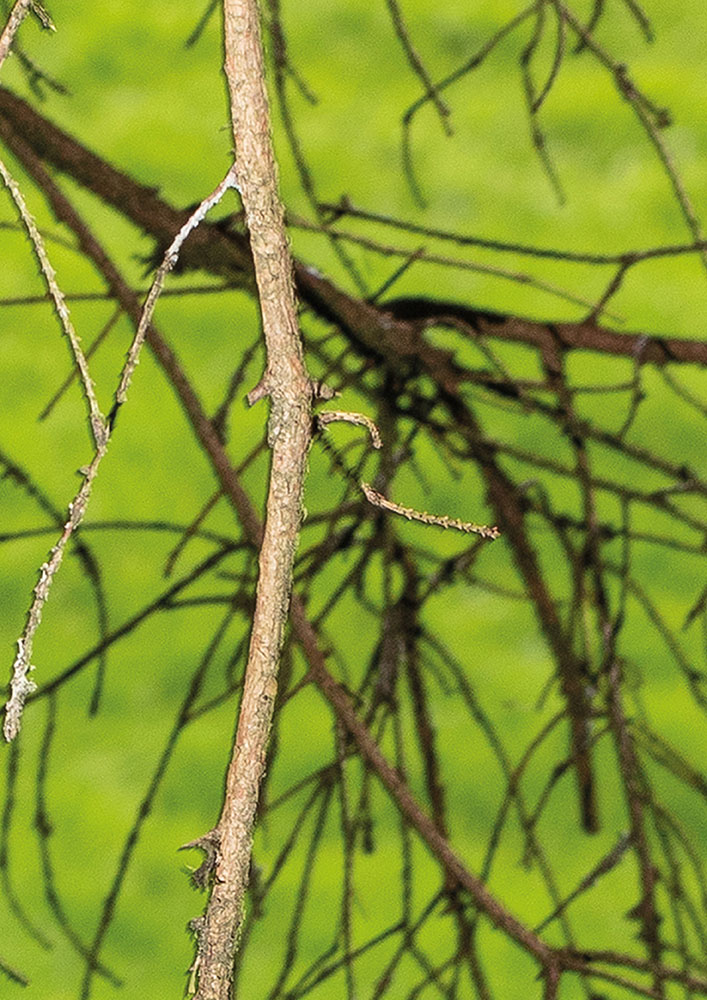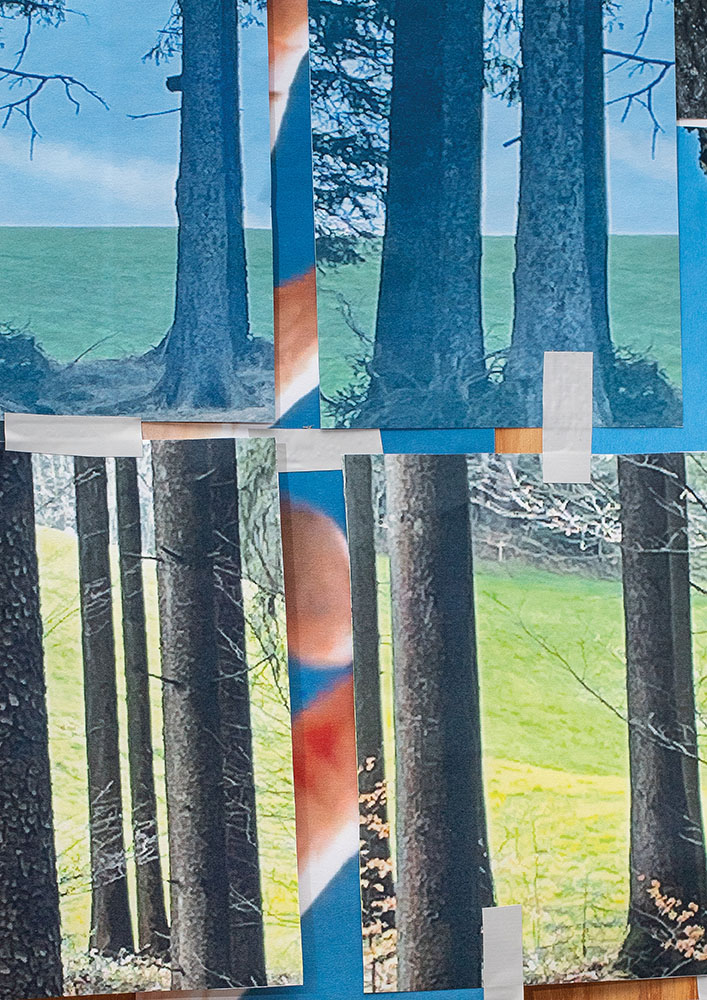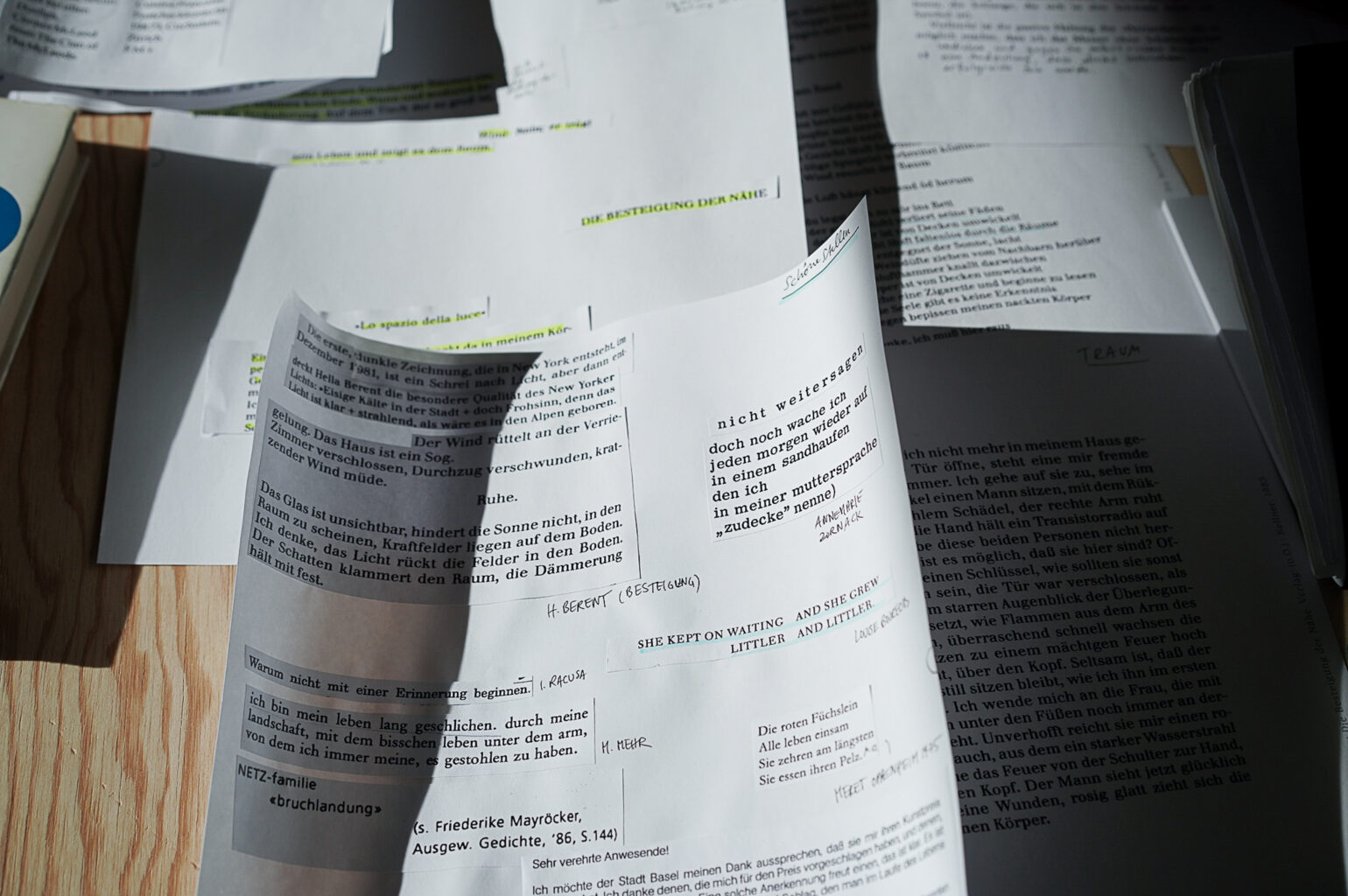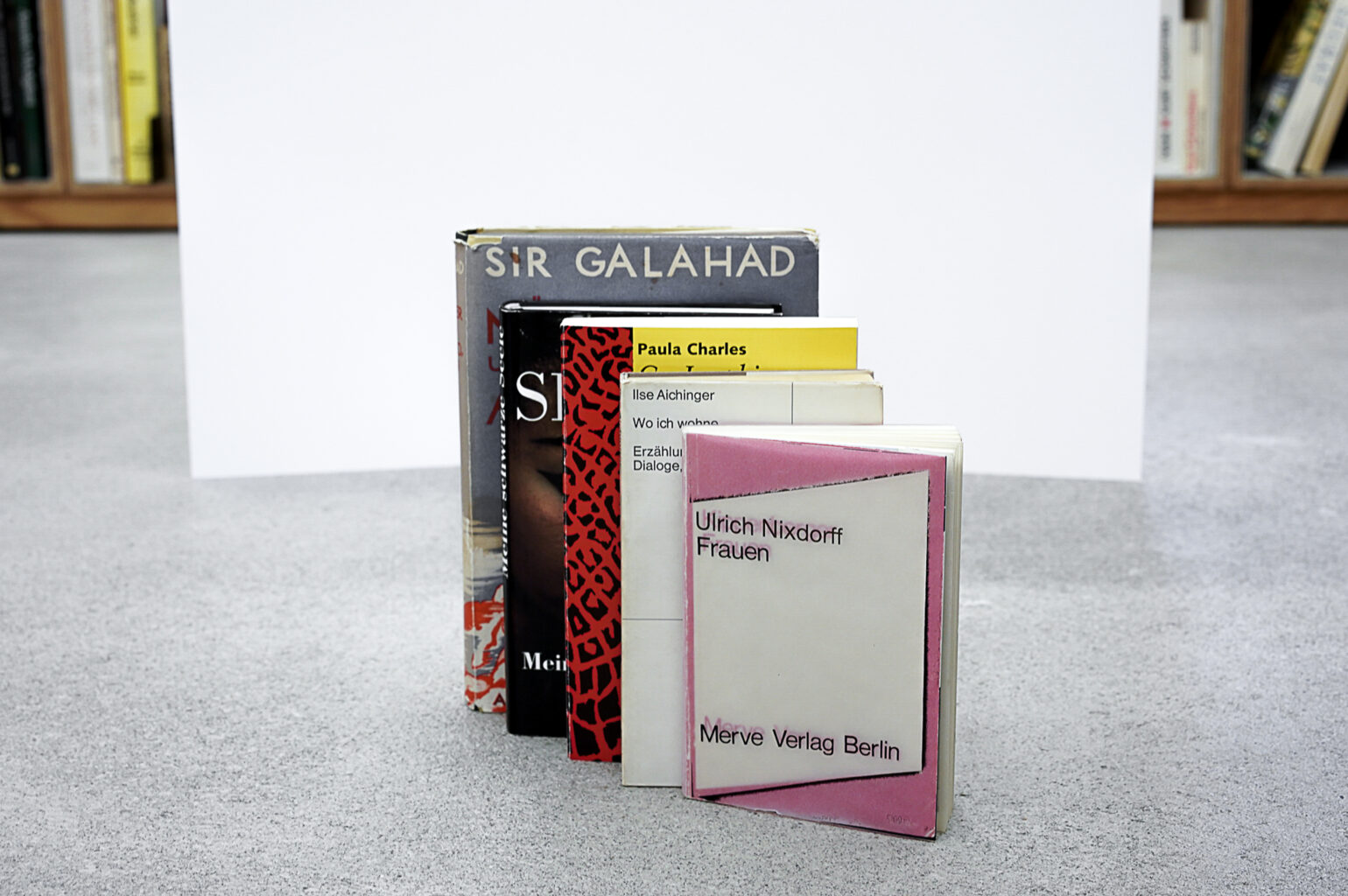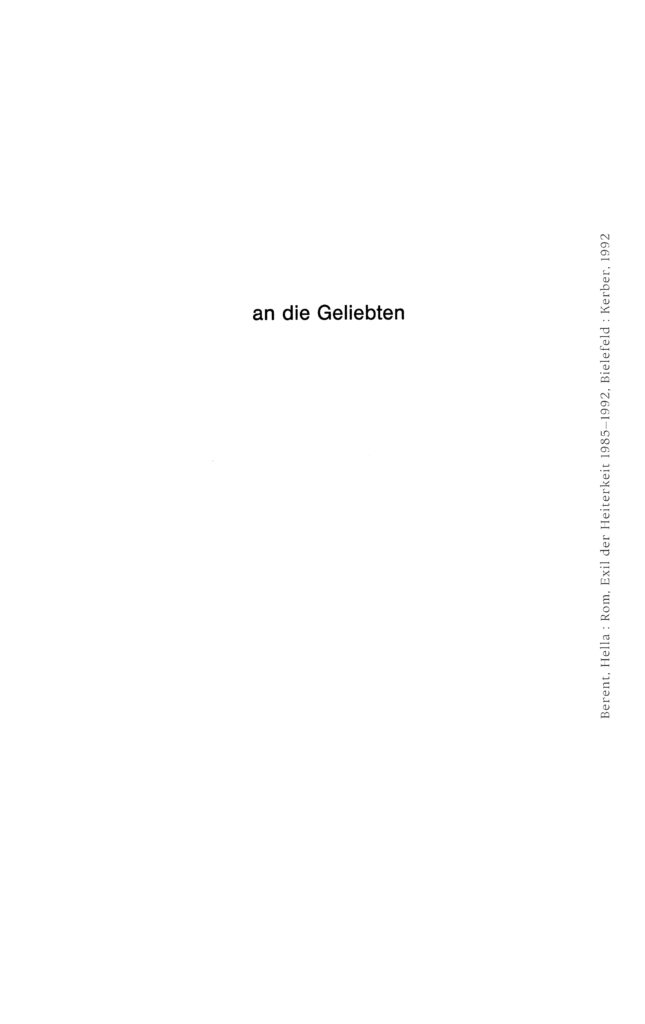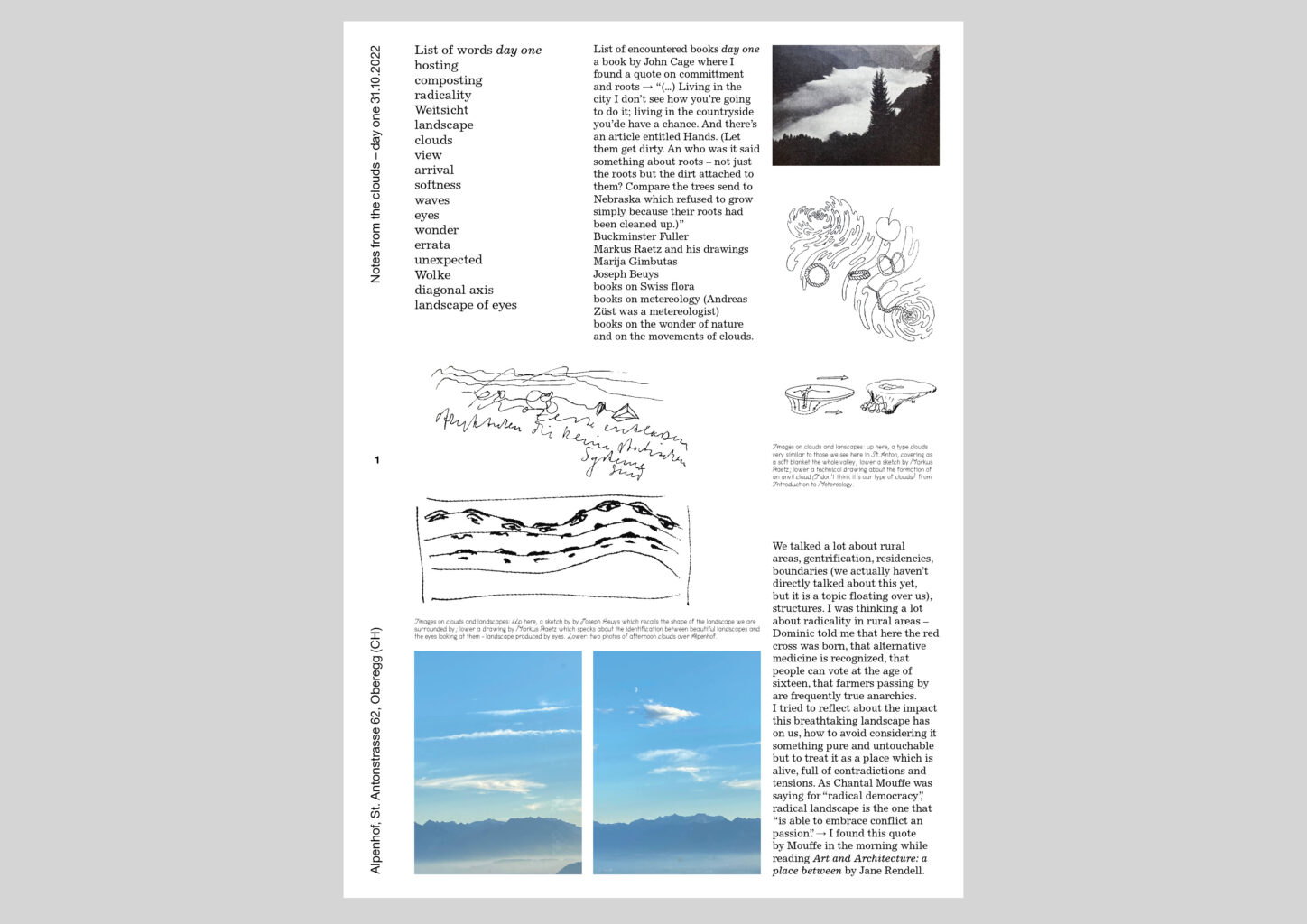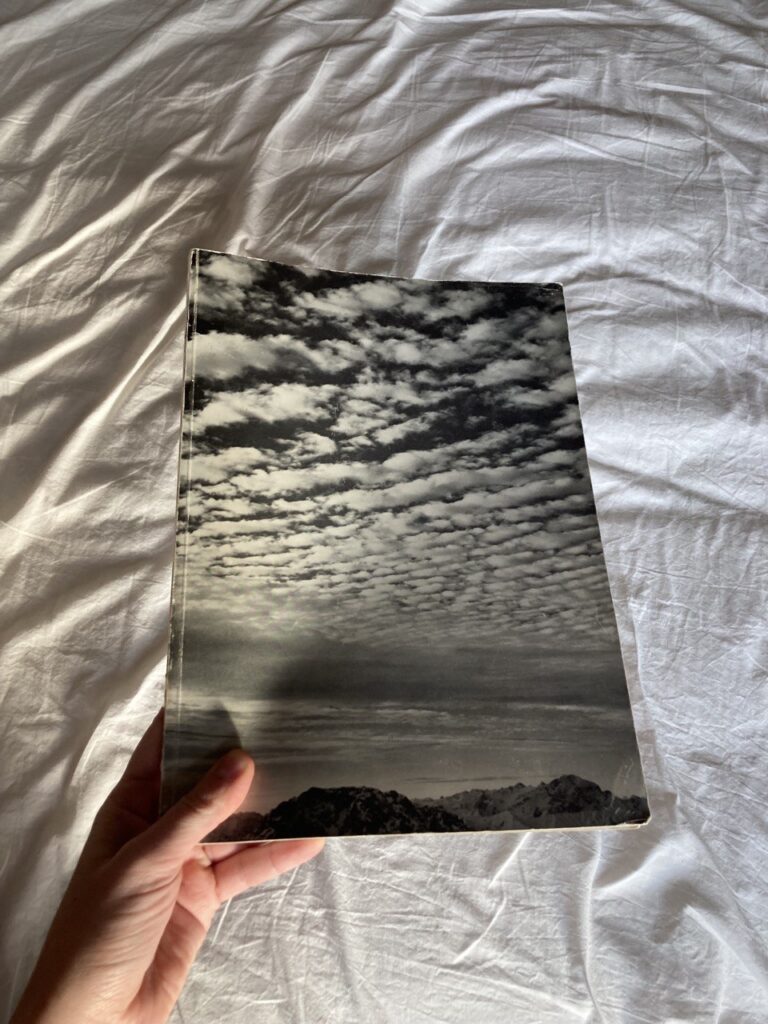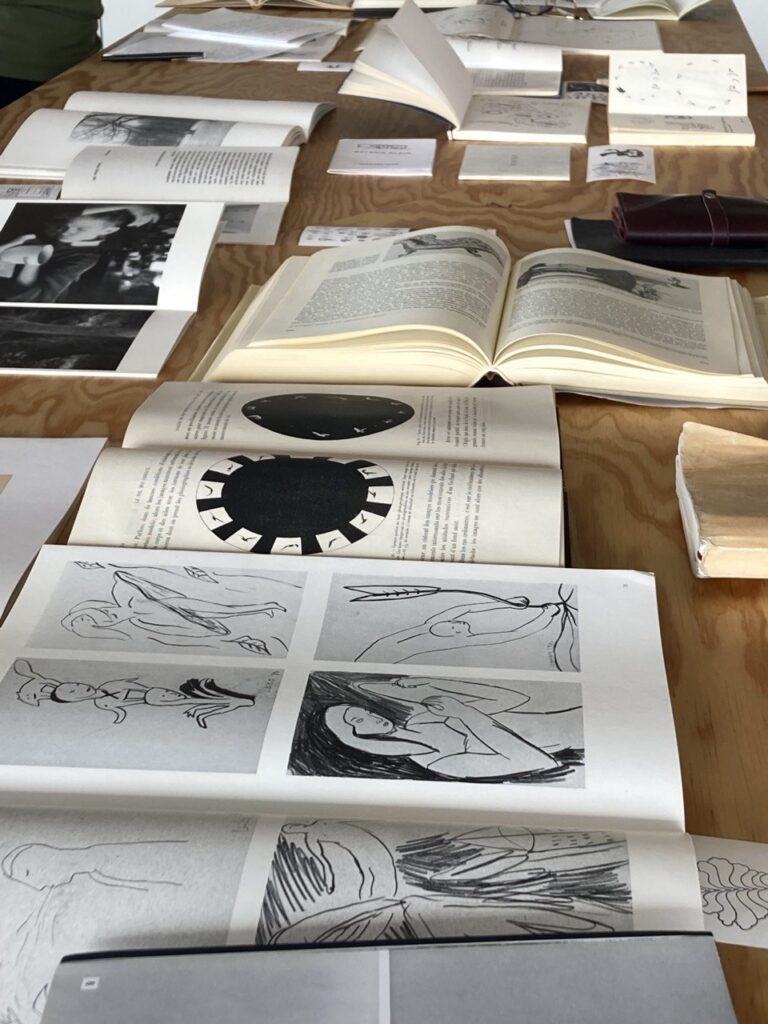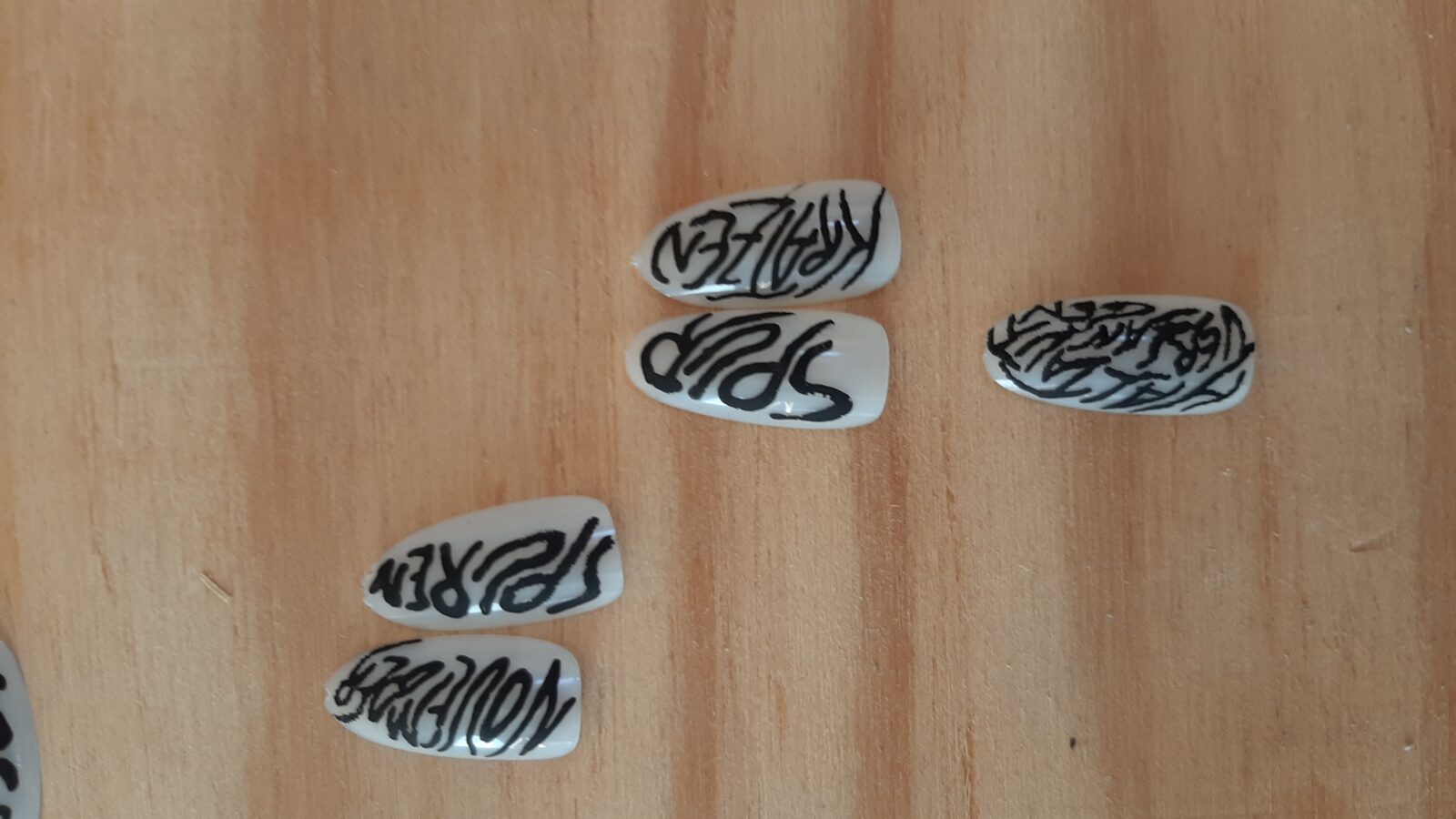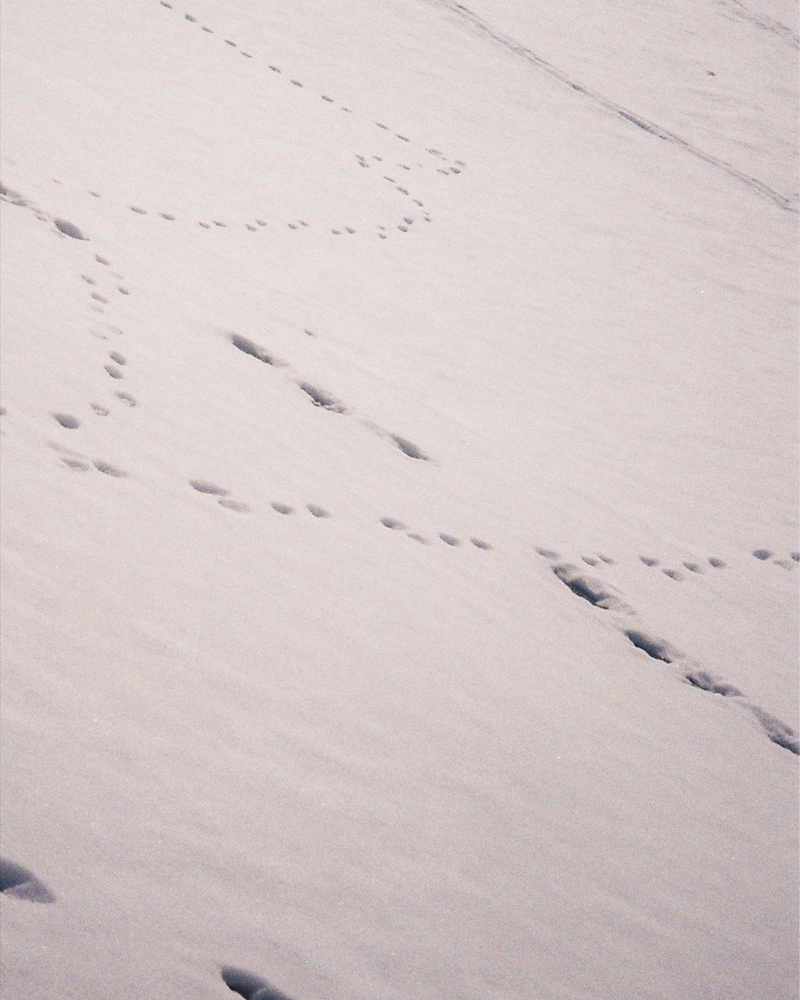‘BAZ Recipe Book’ is an open publication looking at the library as a source of bewildering recipes – those that make us try new ‘dishes’ of life, rather than sticking to the well-proven ones. We spent a month in the Bibliothek Andreas Züst, ‘cooking things up’ – browsing the numerous books in search of recipes that would never come to our mind otherwise:
How to identify a ‘difficult’ cloud?
How to become deliberately available and unavailable?
How to toot your horn?
How to digest the wisdom of the idiots?
These and many other bizarre recipes opened a stage for the discussion and raised the question of certainty and doubt. Are the recipes found in books precise enough to stick to them? Should one believe in everything if it’s written in a book? Do we come to a library to look for answers? Or to find questions?
As we spent days in the library we observed its visitors as well. It seemed that many of them found themselves in the library almost by chance, with no particular plan or task in mind. Similarly to us they were aimlessly browsing through the beautiful books. We thought of ways to give this browsing some purpose or at least some prompts. Inside the books we hid the bookmarks to mark the pages containing the unexpected recipes and encourage the visitors to bookmark their own findings as well.
Although the collection of the library is finite and limited by the date of the untimely passing of its owner, the unexpected recipes that one can find in the books – are potentially infinite and invite the readers for a perpetual continuation of the library’s life.
Text: Olya Korsun, Gatis Murnieks
November 2023
During their stay at Alpenhof the hinterlands editorial team explored lines, links
and uneven connections between library and landscape. Going back to the basics
of magazine making, they produced a small zine and used the process of making
it to reflect not only on rural landscapes but also on their ways of working
together.
The library as landscape
We might already wander through the library like through the fields and hills. It is
its own landscape made up of boxes stacked with books, plastic dividers sticking
out, some books presented on small stand-up displays, objects scattered
throughout. What catches your attention? What do you feel drawn to?
What happened to these books before? They almost burned in a fire started from
vinyl and paper, Peter tells us, while we sit in his cozy but cold
attic-turned-living-room-turned-performance-space. We are hungry for his stories
of how he met Andreas, what kind of person he was. This is what we wonder while
we wander the corridors of that little box full of boxes that is the library. When it
was itself still wandering, the library was again threatened when a graffiti called for
violent pyromanic actions against gentrification places, such as the gallery where
the library had traveled to for the time being – Mara tells us sitting in the midst of
the collection, feeding us slowly with answers to our ravenous questions.
He was a memorizer, they say, his memories now contained and put in order. All
that stuff is sorted, but the abundance, the mess, the cracks, the undergrowth
remain.
The landscape as library
Week 1: We walked down from the crest and followed the surrounding paths. First
into the unknown, with an open mind. Keeping an eye out and absorbing where
the first steps took us. What we found: Animals, signs, wild herbs, cheese vending
machines, tracks, stacks of wood, people, sights, smells, sounds and encounters. In
this first period, walking was an activity in itself, without a purpose, simply heading
off into the blue.
Week 2: Then a purpose for our walks was sought for, was found or emerged on its
own. A dance performance in Trogen, a place to pick thyme for herbal tea, a visit to
the Brockenhaus in Oberegg at a certain time. The passage was provided with
prepositions. To and Towards and In Order To were added. We familiarized
ourselves with the place, became knowledgeable of it.
Week 3: Step by step, stack by stack, we sorted, categorized and documented.
Repetition became a consciously chosen principle: the photo of the same valley
each day, a familiar route to get some air. Patterns emerged through repetition
and series were created. The self-set tracks were followed. The tracks of Andreas
and his relations to our surroundings.
Week 4: The patterns bring us back to the beginning. We want to lose ourselves
again, to be guided by intuition. No more plans, just go for it and perceive anew.
But is that still possible when you are already familiar with your surroundings?
The trails we walked left traces. We take pleasure in tracing lines of thought, in
finding connection lines, in drawing an outline. We observe how we seek order
and templates ourselves, just to feel the urge to break them again.
Text: Maike Suhr, Hanna Döring, Freia Kuper (hinterlands magazine editorial team)
November 2023
As we approach the library of Andreas Züst, browsing through its massive repository of heterogeneous knowledge, we are confronted with the sheer otherness that surrounds us, with its ocean-like vastness. Something similar to what the legend reads: “Hopelessly inspired in the Labyrinth of the Bibliothek?”. However, to get lost in our own labyrinthic paths was only part of our intention: for this whole month, we shared these experiences with an opposite kind of archive, humanity’s newly found and widely controversial companion, the general purpose AI language model Chat GPT.
This AI language model reacted to our questions, descriptions and impressions of the library in a way that allowed us to rethink its current organization, as well as the ideas regarding our own project and exploring of the Andreas Züst’s archive. In contrast to the library of Babel imagined by Jorge Luis Borges, in which the library represents an infinite and chaotic collection of all possible knowledge, we cannot get lost in the prompt-answer structure of intelligent artificial communication. It is a space with no extension. However, when prompted with the right inputs (descriptions of the library’s space and books, for instance), the AI language model was able to participate in our reading experience, serving as a digital compass for this particular labyrinth. This allowed us, also, to dehumanize this intelligence, reminding us that exploring an archive still remains an eminently human task.
Without dismissing the technical feat achieved in the language model, we present our interactions with Chat GPT, alias G., through a media work that visualizes the human and machine-generated text into a space of meaning, where distances and paths are defined by computational measures similar to the ones that originated G.’s answers in the first place. With this, we attempt to recover the diachronic reading experience of the physical library, where the archival, alphabetic organization is always subverted by the curiosity-driven exploration and serendipitous findings.
Text: Baltazar Pérez, Pia Pachinger, Simón López Trujillo
May 2023
I spent a month in an observatory of change. On the top of the forest, the library sees: snow rain, and light, falling on the adjacent trees. The trees show up in, and on, our screens. The various-in-size screens are moved across the building, taken from the rooms to the desks to the shared spaces. A red kite glides by. I’m told they’re common in Zürich. Also there. The hands, are touching the screens_the books_the glasses_the coffee cups. At dusk, the main window looks just like a big blue screen. Branches on grey skies, on blue skies and the dropper cables, are happy or sad. Winter is not ending. I spend the night with a robot at Sitterwerk, where all books can touch, where all ideas can touch. The books are rearranged frankly. I look at lines by Dubuffet and Sophie Taeuber-Arp. In other books. At lines used to illustrate writing about asemic writing. I see quite some lines. A photograph of a work by Roman Signer suggests the possibility of bringing together two remote places, Säntis und Bodensee. The window frost is melting. The group smokes cigarets. Every day. Breakfast together.The kite flies by, every day. Like they do in Zürich. An old project about time-space synesthesia resurfaces. I ask them to make sketches on A4s. How do you see the calendar? Is it in front of you or is it around you? The month pass by. We enter, sit and leave the library. I am intensely surveying the circulation of the space within itself within myself.
The library as a hypnotist is a project that opens spaces in the Bibliothek Andreas Züst. I spent four weeks collecting and associating images taken in and outside the library. The photographs are used as a material and together they form a space. Each space is printed and becomes a 24 pages publication, big format. I call them immersive spaces. The four publications take different directions and assume temporary names: taking a line for a walk, extramental in the woods, a mountain melting in a lake, longing for smoking.
During the residency, I initiate a collaboration with a hypnotherapist around the possibility of visiting my immersive spaces. We’re trying it out. It’s the first time. We end up visiting two. I’ll do it again.
Johanna Himmelsbach is a graphic designer and artist based in Amsterdam. Her editorial practice is informed by spatiality—both physical and mind spaces, and explores how they visually come together. While she considers ‘image editing’ as a craft and a subject in itself, she mediates on the notion of image as a feeling, a ‘visual idea’ that travels through space and across mediums.
Visuals from extramental in the woods (working title), publication, 24 pages, 325×460 mm, Bibliothek Andreas Züst, 2023
Text: Johanna Himmelsbach
April 2023
During the one-month stay at the Alpenhof Anthonie de Groot and Gianna Rovere explored different ways of working together. For example on walks, with commenting on each other’s writing, with audio, image-search, collages or writing letters. In all these experiments they were interested in each other’s working methods; in how they research, link and spin on. Coming from different disciplines, it was in language, in text, where they met. They used the Library of Andreas Züst for research. They gave themselves the notion of «longing» as a starting point, as a feeling that should guide their research. As a feeling that keeps coming up, describing gaps and voids; what is missing and what one longs for. From the research and reflection, a collection has emerged, which is built as a dialogue. They call it their «database», which they will take further on to continue working on other projects.
Excerpt from the «database»:
Keywords:
1. New beginning
(No reset, no forgetting, but also no too strenuous «referencing».)
(Deliberately avoiding discourses and contexts.)
Yes, but I like discourse and making connections.
2. Walks
3. Ways
(Bumpy and steep, smooth and gentle. Eyes on it or just on the side of the path, where we gather in thought and observe, forget some things and yet remember others when we come back from the same walk and tell each other about it.)
It is like reading without concentration. The not conscious reading, where the thoughts are completely elsewhere and I could not repeat what the last lines were.
(Or the moment when one has actually already fallen asleep while reading. Dreaming creeps into the reading movement and only becomes noticeable when it ventures too far away from reality.)
Idea for method: Late in the evening, with tired eyes and heavy hand.
4. Not being concrete
5. Not thinking about the goal
(I seal the target in a glass ball and put a cork on it. Slowly, the steam of habit builds up in it, so that the view of the target from the outside is not quite as clear as it was at the beginning, and the temptation to break the glass and take the target is not quite as great.)
We have already talked about the physical. Warn me before you take the hammer because you can’t take it anymore.
(Maybe I have to take the hammer, weigh it in my hand, feel the weight, the violence, in order to be able to put it back into the toolbox unused?)
Yes, or use it once briefly, not with full force, but just so lightly, to give a little satisfaction to the desire.
6. Not thinking about the actual thing
(Not thinking about it, that you might think about it, that what you don’t think about might become the focus.)
Does that perhaps also mean that what we are doing here is a wrong approach? Maybe we also forget for a day why we are actually here.
(I imagine that would be nice! But do you think we can actually forget why we are here?)
By cleaning for a whole day and drinking beer, maybe. Then it’s already two days when the next one is a hangover day.
7. Casually
(By the way while running.)
(By the way, listening.)
(Looking past.)
8. Collecting
(It burns under my fingers. Want to hide my restless greedy look.)
Or you get involved with this «method». I mean, we’re talking about taking the focus away, from the in-between. Let’s collect and document but in the process, fill our database, and then think about the «point of interest».
(I think writing about restlessness is a way to engage myself in the method. Because when I write about it, I take the wind out of it.)
Not writing about restlessness, but writing restlessly?
9. Productivity in not being productive
10. Database
(Stone bench, showcase.)
A book, haha.
(A book about stone benches, locked behind glass and only to be looked at with a key and white gloves.)
11. Archive
12. Document
13. Record
The challenge in the whole endeavor begins to emerge:
How to look at the gap when there is nothing in place for a gap to form?
(How to understand the thought processes of the other person and understand and respond to and use our different approaches?)
Text: Anthonie de Groot, Gianna Rovere
April 2023
Page 31, line 18 should read unintelligible
Page 21, line 3 should read one not on
Page 41, line 3 should read he explained not the explained [1]
HINT:
On page 86 the artist’s name is missing. [2]
errare, meaning “to stray, to wander” is also the Latin ancestor at the root of the words error, erratic, and erroneous. During our residency at Bibliothek Andreas Züst, we continued our collaboration on an ongoing artistic research with the working title ERRARE. Together, we approached the library’s holdings through a wandering reading of paratexts[3] such as dedications, acknowledgements, colophons or editorial notes. These texts account for the labor and collective efforts behind the making of a book. We are interested in unearthing absences and processes of exclusion from literary production.
We started to map out the literary network of (queer) women artists and writers in German-speaking Switzerland and beyond, on the basis of the library holdings of Andreas Züst.
For women, the art and literary world was for a long time only accessible in the roles of muses, copyists, assistants, editors, or under a pseudonym. Inspired by errata,[4] we inserted paper slips into some library books, as a way of sharing fragments of our research and linking books with each other, allowing future readers to retrace these hidden alliances.
Departing from this research, we continue to send new paper slips to the library. We are also writing on an essay and are creating a sound and voice based performance, in which the paratextual findings unfold.
For you, M. [5]
There are always many people involved
in the creation of any book, but special thanks are due (…) [6]
Annette hat mich ermutigt, einen zweiten Band von
WO DIE NACHT DEN TAG UMARMT zu wagen.
Sonja schenkte dem Buch seinen Titel — in letzter Minute.
Ulrike hat Korrektur gelesen.
Doris half mir im Büro beim Verträgeschreiben
und Beantworten der vielen Post.
Und ich? Ja, ich habe mich sehr gefreut, dieses Buch zu machen. [7]
NETZ-familie
«bruchlandung» [8]
Meiner Mutter,
meiner Frau,
meiner Tochter [9]
Ich danke meiner Schwester Diana, meiner Großmutter, [10]
Für Gertrud H. [11]
Für Nicole Stéphane [12]
Meine teuren Mutter, dem heiligsten Stern über meinem Leben [13]
Für Angelika Oehms [14]
Au lecteur, ces amers d’une route déjà longue [15]
Für Ester Altorfer, zerbrechliches Feuer des Wassers [16]
Für S., meine Große [17]
Dieses Buch ist den Walen gewidmet.
This book is dedicated to the whales.
Ce livre est dédié aux baleines. [18]
an die Geliebten [19]
Text: Tabea Nixdorff und Monique Ulrich
November 2022
Monique Ulrich is an artist, editor and researcher with a background in photography and literary/cultural studies. Her artistic practice comprises writing, drawing and film as notation, installations as well as sound and language based performances.
Tabea Nixdorff is an artist, typographer and feminist researcher, currently living in the Netherlands. Her artistic practice involves writing, (self)publishing, sound and language based performances, collaborative learning and social gatherings.
Tabea and Monique started collaborating in 2018 and have since then conducted performative readings in Berlin at diffract – center for theoretical periphery, during the Conceptual Poetics Day at HKW, in Leipzig at KV-Verein für zeitgenössische Kunst and ROTORBOOKS, and in Frankfurt/Main as part of the book fair program by Spector Books and Scriptings.
Footnotes
[1] Errata in: Cogniant, Raymond ; Rewald, John : Paul Gauguin. A Sketchbook. New York : Hammer, 1962. Sig. KAAG 07
[2] Errata in: Interfunktionen Heft 9, Köln : Heubach, (o.J.) Sig. ZO 019
[3] Paratexts are everything that’s ‘beside’ (para in Greek) the body of the work, or book. So, for example the title, dust jacket, foreword or colophon.
[4] An errata is a slip of paper appended to a book listing corrections of misprints.
[5] Sontag, Susan : I, etcetera. New York : Vintage Books, 1978. Sig. LABH S08x
[6] A Treasury of Chinese Literature . Greenwich : Fawcett Premier Book, 1972. Sig. VHEC 02
[7] Lorez, Gudula (Hrsg.): Hautfunkeln . Erotische Phantasien und Geschichten von Frauen. Berlin : Lorez, 1982. Sig. MO 021
[8] Friederike Mayröcker, in: Zwischen den Zeilen Nr. 3/1994 : Hermann Burger, Michael Buselmeier, Elke Erb, Albert Ostermaier, Jürgen Theobaldy, Bartolo Cattafi. Winterthur : Engeler, 1994. Sig. ZB 001
[9] Meinecke, Thomas : Tomboy : Roman. Frankfurt am Main : Suhrkamp, 1998. Sig. LABA M14x
[10] Charles, Paula : Go, Josephine, go. Zürich : Limmat, 1993. Sig. LABC C025
[11] Mehr, Mariella: Brandzauber : Roman. Zürich : Magel & Kimche, 1998. Sig. LABC M007
[12] Sontag, Susan : Über Fotografie. München : Hanser, 1978. Sig. LBH 018
[13] Lasker-Schüler, Else : Die gesammelten Gedichte, München : Wolff, 1920. Sig. LABA L005
[14] Nordhausen, Hilka : Melonen für Bagdad. Ostheim / Rhön : Engstler, 1990. Sig. KACN 002
[15] Braque, Georges : Le jour et la nuit : cahiers 1917–1952. Paris : Édition Gallimard, 1952. Sig. KAAB 021
[16] Esther Altorfer 1936–1988. Bern : Salchli, 1989. Sig. KAEA 003
[17] Lorez, Gudula (Hrsg.): Hautfunkeln . Erotische Phantasien und Geschichten von Frauen. Berlin : Lorez, 1982. Sig. MO 021
[18] Emch, Nik : M. Zürich : Bilger, 1995. Sig. KADE 002
[19] Berent, Hella : Rom, Exil der Heiterkeit 1985–1992, Bielefeld : Kerber, 1992. Sig. KACB 003
On hosting and guesting – Aftercare to a residency experience
A letter to Alpenhof and Bibliothek Andreas Züst care-takers
Dear Flavia, Laura & Dominic,
dear Mara
I arrived here as a guest, getting to know a position which is usually uncommon to me. And instead of embracing it, I thought that occupying this middle point – between being a guest and usually performing the role of the host – could be fertile and productive.
Usually, within Robida, we tend to avoid the binarism of guest and host, which is potentially problematic. Following Jacques Derrida’s text Of Hospitality (1997), hospitality (if not unconditional) implies a power to host and hence involves claims to property, ownership and a form of self-identity. The opposition between who is a host and who a guest, therefore, speaks of a relation of power. For this reason, when possible, we try to avoid this duality of hosts vs. guests, speaking rather of temporary and permanent dwellers or referring to guests as co-dwellers. Making the relation between temporary and permanent inhabitants reciprocal and sharing with guests responsibilities the place demands is a way of overcoming this binarity – of making hosts less hosts and guests less guests.
But the context of this specific residency is quite different from Robida’s one: Alpenhof is a hotel and the space itself, with the single rooms, the entrance, the bar, the kitchen speaks clearly of this binarism. While the fact that you are using it as your own house too, again questions its spatial clarity. I actually grew up in a space like this: the restaurant of my grandparents, where the living room was the bar and the kitchen of the restaurant, with its sterile furniture, was their home kitchen. I don’t know if this way of living made more the restaurant a house or the house a restaurant: if hosting clients would be almost as hosting friends at your own house or if living in the restaurant would be closer to never leaving your work space. Probably it was both.
The first day of my residency here I wrote down: Tabea spoke about errata. I spoke about reading as finding unexpected things by change, as collecting things that sediment in a fertile humus, reading as composting. Comp(h)osting. Interlacing hosting and composting – it’s about temporality, let encounters, conversations, events sediment, stay, be in contact with other remains, become a meshwork of elements which decompose to create humus to host again. Does this relation about composting and hosting speak only about finding a time for letting things, meetings, conversations deposit – does it only speak of a slower temporality, of a time dedicated to waiting for the transformation of the material. To compost means also to accumulate in a place…
It is so beautiful and precious to see how an idea comes to life while writing. This word, comp(h)osting, came up the first day and followed me toward the whole month here. I explored it’s potentialities through reading about hospitality and about composting, searching in the library images and traces which could be somehow connected to these two topics, writing down lists of verbs related to one or the other term, defining and re-defining why this term could be productive. One I noted down that usual literature about residencies focuses on artists and their experiences, less frequently on hosts. Another time I wrote that: comp(h)osting means relating the host to the transformative essence of the compost. Once I tried to trace back why I was thinking of composts: the reflection on compost came in relation to the fertile accumulation I am carrying on with my readings from which I don’t demand anything immediately.
Thinking my reading material as compost material brought me back to the library: can the metaphor of the compost be applied also to libraries – at the end they are also a layered accumulation of materials made to produce something, made to sediment in people’s mind and fertilize it! How can we through the library reflect on which type of residency and cultural project to develop?
There was a moment in which the metaphor of composting in relation to hosting became less interesting as the interpretation of residencies as composts, where materials, thoughts and people come together and arrive to unexpected results, but rather as the compost as something that comes after the residency. What are the scraps we want to collect at the end, accumulate somewhere and give time to become fertile (the other question is fertile for what? What would be the purpose of this rich soil?). What is the aftercare needed for residencies? Beside thinking of residencies as interesting for the artists, we can ask ourselves which scraps they leave behind and how can these remains be combined – what methodologies do we need to do so – to enrich our soils. What would we as guests give back and what would we leave behind? It’s interesting: for the host, the verb exists (to host) and for the guest not – defining the guest as a passive character. What would it mean for a guest to guest?
On a Monday morning, after breakfast, I facilitated a small workshop for the hosts and guests of the library. We sat around the big table and, with the help of the books which belonged to Andreas Züst, we explored the terms guest, host, comp(h)ost. The trace of this small gathering are short texts and three lists of verbs:
To compost: to accumulate, to layer, to decompose, to fertilize, to ferment, to collect, to throw, to transform, to maintain, to wait, to care, to nourish, to repurpose, to slow down, to sediment, to pile, to re-use, to combine, to collaborate.
To host: to care, to assist, to dwell, to accommodate, to share, to listen, to help, to introduce, to open, to explain, to let in, to facilitate, to guide, to stimulate, to nourish, to accompany, to wait, to organize, to encourage.
To guest: to allow, to adapt, to help, to listen, to question, to contribute, to share, to collaborate, to change, to encounter, to meet, to dwell, to ask, to inhabit, to feel, to thank, to adopt, to follow, to consider, to propose, to rest, to receive, to trust, to return.
Text: Vida Rucli
November 2022
How many bodies are we?
Haut– und Hüllenträger*innen (1) (X Hella Berent)*
Bodies of time
bodies of emotion
bodies of memory
bodies of action
bodies of borders (2)
Metamorphosen; Häutungen,
– slow processes of change (3)
our bodies are stages for expressions
of the collective memory
Erfahrungen des Individuums als soziales Wesen
schreiben sich hier ein. (4)
Two bodies are on the one hand the self and on
the other hand society. Sometimes they come
so close to each other that they almost dissolve.
Sometimes they are seperated by a considerable
distance. (5)
How do we archive?
(What about cultures that don‘t wriitten routines?)
Body language (6)
My body of time can recontruct the past (7)
Schmerz–Archiv (8)
Handlung / Zugriff (9)
The archive as a general system of formation & transformation. (10)
Erinnerungen selbst sind nicht fassbar.
Wach bleiben sie nur, wenn sie wieder heraufgeholt,
wenn sie befragt werden. (11)
If our bodies are landscapes, what does it mean?
Der Körper als Ort der Formung
– äußerer, wie innerer Wahrnehmung (12)
Verkörpern (13)
(Re) Defining
(emotional)
space
language
categories (14)
Licht fällt in den aufgerissenen Körper macht Gedanken zu Gegenständen. (15)
«We produce knowledge through our body. How do we work in our artistic practice with(in) our body archive? Coming from drawing and textile we work as a tandem reflecting on our own and found (Andreas-Züst-Bibliothek) archives as survivors of / with time. This resulted in a drawn and written journal.»
Marie Schumann (*1991) is an artist working mainly with textiles. Her focus moves between (soft) spacial intervention, process experiments and research into the multi-layered metaphor of the textile in our society. She is strongly connected to the cultural technique of weaving, which as a binary system is the basis for our digital world.
Vanessa Hartmann (1987*) is an artist using mainly the practise of drawing as a tool of thinking and reflecting. With different visual metaphors she questions the act of drawing as an archival method. Which codes are embodied in our social roles, daily routines, languages and actions? Bodies, as well as societies, consist of particles, of fragments and are in constant repetetive transformation: Repetition as an intstrument of knowledge, of remembering, of questioning, but also as an instrument of power.
Text: Marie Schumann, Vanessa Hartmann
November 2022
Quellenverzeichnis
2, 4, 5, 12 Dorota Sajewska: „Körper-Archiv. Wie performative Künste die affektive Interdependenz von Wissen und Geschichte vermitteln“. In: INSERT. Artistic Practices as Cultural Inquiries, Ausgabe 1, Zonen der Gegenwart – Praktiken der Annäherung, 2021, URL: https://insert.art/ausgaben/zonen-der-gegenwart-praktiken-der-annaeherung/koerper-archiv (letzter Aufruf: November 2022)
1, 15 Hella Berent, Die Besteigung der Nähe, Mit Beiträgen von Helmut Frielinghaus, Hilka Nordhausen und Hannes Hatje. Fotografien von Lothar Schnepf, Hella Berent und Hannes Hatje. Dieses Buch erschien anlässlich der Raum – Installation im Oldenburger Kunstverein vom 27. Januar bis zum 22. Februar 1985
11 Walter Benjamin, https://insert.art/ausgaben/zonen-der-gegenwart-praktiken-der-annaeherung/this-actof-opening/ (letzter Aufruf: November 2022)
10 Michel Foucault, https://d-nb.info/966423607/34 (letzter Aufruf: November 2022)
3, 6, 7, 8, 9 ,13, 14, eigene Quelle
I asked my friend Kim how to say some ‘basic’ things in Swiss German and how to write them, she told me: Swiss German is not a written language, so everyone writes how he/she/they want, I would write: guätä taag – buongiorno.
I came to St. Anton to research the traces of the ancient element of the fire in the collection of the Bibliothek Andreas Züst and in the Appenzell landscape around it. Even if this immaterial presence is not anymore very visible in architecture, I am fascinated by the strong role it had in the history of cultures and households. The fireplace is a space of aggregation, transmission of knowledge, tradition, histories and discussion; and it is also a symbol of community and as such connection with-in an environment.
There is no fireplace in the Alpenhof and there is no useful map I could take with me during the explorations. St. Anton is exactly in the crossroad of four different maps (1075, 1076, 1095, 1096). – The map is not the territory – so, I move my steps on different terrains: on the tiny roads passing trough the farms, on the paths in between trees and the one on the snowy and then green green grass fields, on the pages of the publications, on images of craft, landscape, culture, sport, volcanoes, minerals and in between sentences. I walked in the shady areas of the forest to harvest wild garlic, under the rain, in the fog, during warm spring days, in the latest light of the day, in unknown directions to discover a bakery still using a wood oven, to other villages to do my grocery or to scan some books – so really thought about what was necessary, what to carry (carrying – caring – maintaining). And I started to create a map with traces of fire in the area, with writings, visual notes, anecdotes and questions. The map will be printed on fabric and will be a new tablecloth for the future residents. The dinners where the moment of encounter between all of us living there (Grace, Milva, Samar and the ones visiting) and the tablecloth will be a transportable space for people to gather but also to transmit knowledge about fire in this area: people, places, stories, recipes, experiences that might be useful for who will come next.
Kim told me also in Switzerlands they say: April April der macht was er will – April, April, it does what it wants. – And so I did by exploring this environment and creating a new tool to move in it.
Have good walks,
Always,
Always.
Text: Francesca Luchitta
April 2022
When I applied to the residency, it was on the basis of a video project I had been working on for a number of years. In 2020, I finished a two minute video poem on the archive as photographed by her security cameras. It summarised my amazement that documents and books were preserved and available to the public. When I sent my proposal to Andreas Züst, I planned to expand the video beyond the pixilated archive of the security camera by listening to the wood on wood scrap of page turning and watching the books interconnected on their shelves like sinews of a sleeping giant. My goal was to return to the physical. When I came to the Alpenhof, I did accomplish my goal, but not in the way I had planned.
In Edgar Allen Poe’s story “The Gold-Bug,” the main character is a bookish man whose life is changed not by a book but by a bug he encounters on a hike. He comes to believe that this bug will lead him to buried treasure and claims that it is “the index to his fortunes.” Like many bibliophiles, he cannot encounter the outside world without the two dimensional world of the library overlaid on top. An index is an alphabetical listing of all the topics of note inside a book, with page numbers wherein they are mentioned; but as most bibliophiles and frustrated student researchers find, many books have indexes that do not list all topics of note. Obscure poets are ignored; the Cleveland Zoo; the three mentions of the Throwing Muses that proved that your favorite contemporary poet shared your teenage love of this post grunge band. But most important for our uses here: the index points away from itself. The bug would not make the bookish man’s fortune because it was a rare entomological find; nor the bug looking and weighing as though it were made of gold, so he could fool a jeweller into paying for it. No, if only he could decipher the secret language, this bug would lead him to page 251, Captain Kydd’s hidden treasure. He almost doesn’t succeed, his obsession with deciphering the hidden language having led his best friend to wonder whether he should lock him up until his delusion has faded. Yet for our bookish hero, his success relied upon his freedom of movement. As does mine.
Once arriving in Oberegg, I walked the area frequently. I walked 8 kilometers to Oberer Gäbris, and during much of the walk I kept looking at my soles, convinced by the stench that I had walked on cow manure and that was how the smell was following kilometer after kilometer, over mountain pass and woodland. No, there was nothing on my shoes. The land stank. I loved it.
It was April, it was calving season, and as an Irish visitor who had grown up around cows said, “These don’t look like cows! They’re supermodels.” My artistic query was: how to make an object that honors this particular archive in the heart of the Appenzell? I gathered linden tree limbs that were left in the crook of a tree, and may have once been used as walking sticks by the many hikers in the region. I photographed the eyes of calves and transferred them onto archival gloves. They recalled the Eye of Horus, which protect from evil forces, and relate to the moon; Horus himself does not relate to cows, but the Greeks worshipped Io, a bovine goddess connected to the moon, who was guarded by a shepherd with eyes in each of his hundred hands, who was called “All-seeing.” In Vedic astrology, feeding cows is prescribed for those with problem planets in their birth chart; those with a troublesome moon, for example, are told to feed cows on Mondays.
My goal coming to the Bibliothek was to explore the physical. I thought it would be through documenting books, but instead it was by creating a site specific apotropaic talisman.
Text: Sammar Al Summary
April 2022





